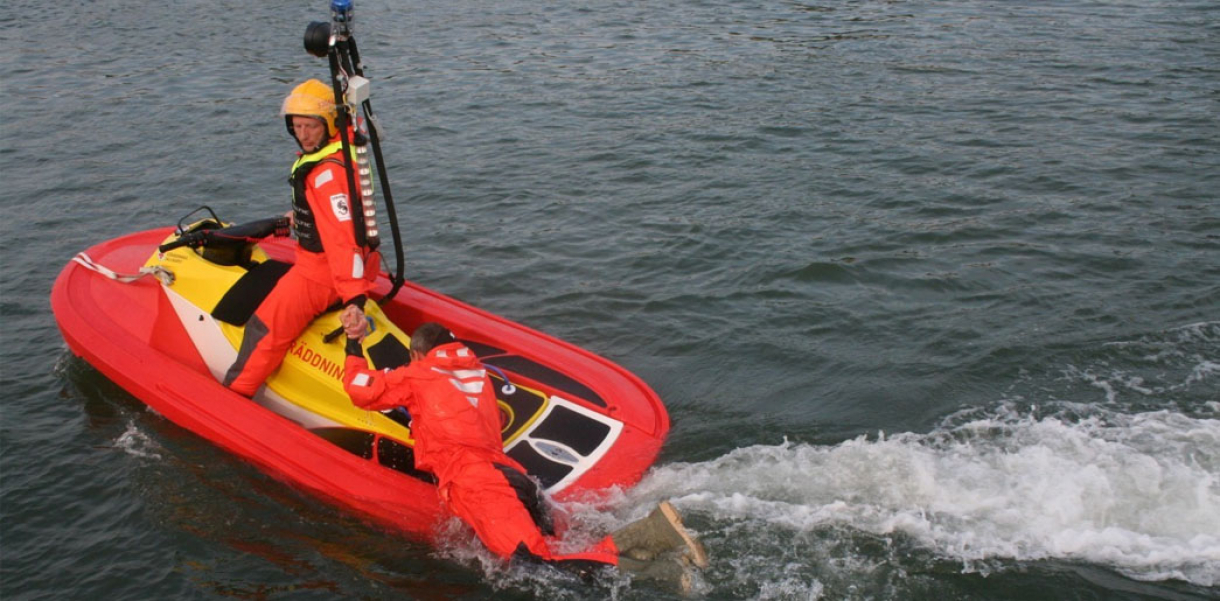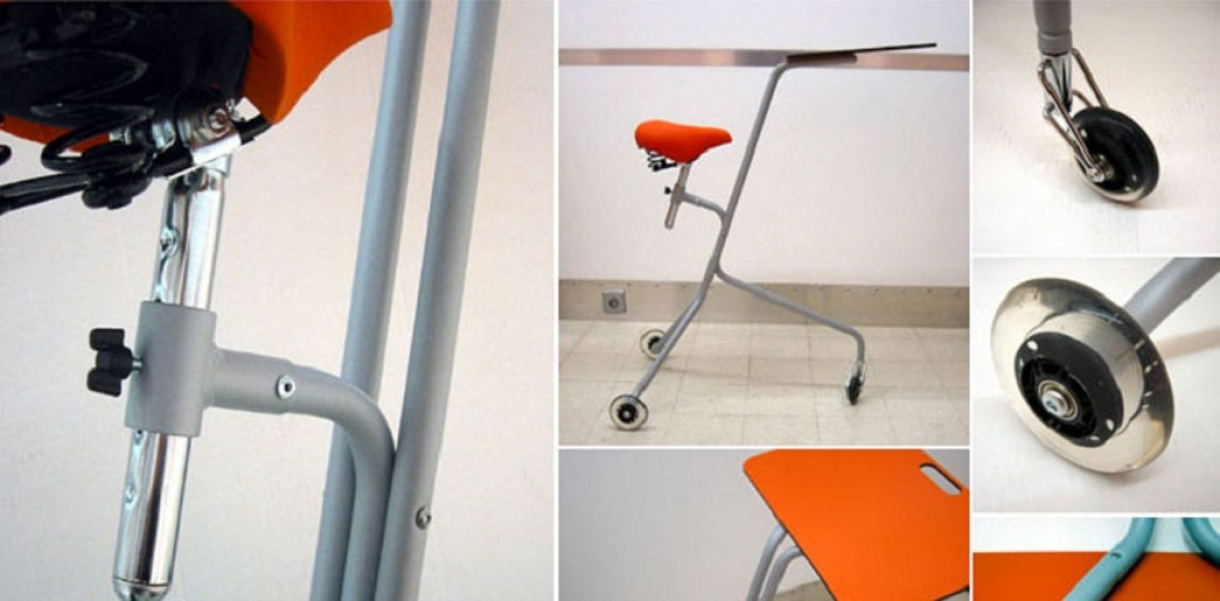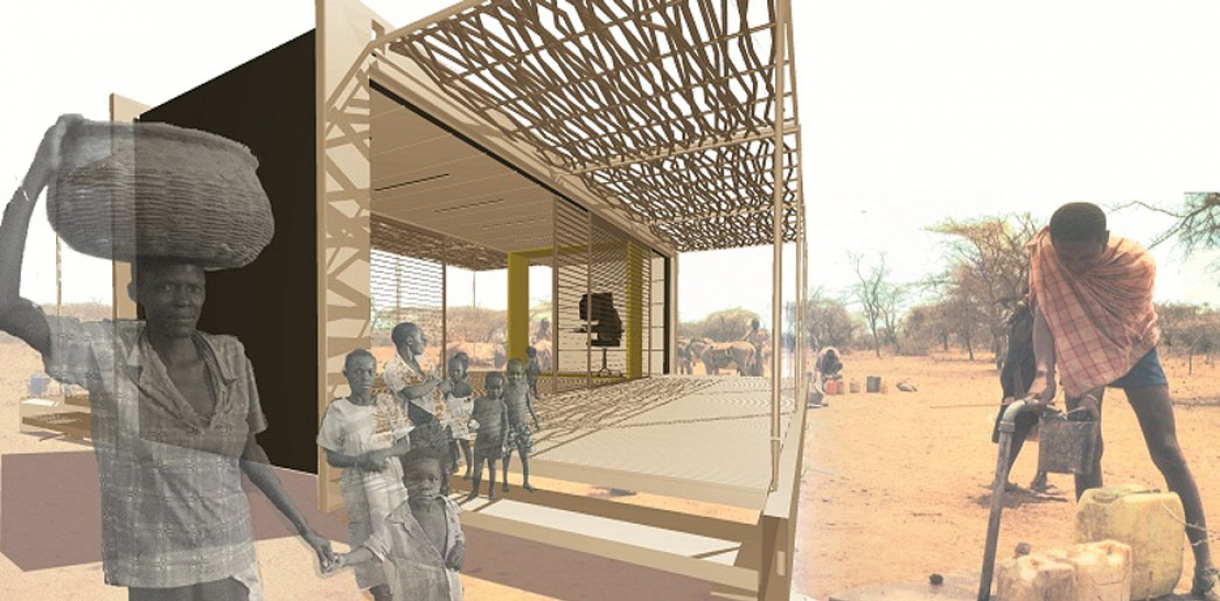Functionality and use of design
The Rescuerunner is used for rescuing or assisting people in white water zones, in shallow areas, among rocks and reefs. It’s designed to operate as a deck boat for a larger rescue boat, but can also operate individually or be carried to an emergency with a car or a helicopter.
How did this design improve life?
The Rescuerunner makes rescuing more efficient, more safe and less stressful for both the rescuer and the rescued in many different situations. Below are three examples where it excels:
- Rescuing or assistance in shallow water, among underwater rocks, along inaccessible coastlines – places where regular rescue boat could not go or the risks for boat and crew would be too great. The Rescuerunner is small, very maneuverable and extremely rugged. It has an outer protective hull which is easily exchangeable through a cartridge system. The protective hull is easy to repair and cheap to replace should it be damaged. The boat can keep operating even if the protective hull is punctured. The Rescuerunner can be used to evacuate people, to take a towline to a bigger rescue boat, or tow smaller boats clear of danger. The rescuer can worry less about the risks. The distressed can get help more quickly. The rescue can be less dramatic.
- Assisting small boats in heavy weather. Boarding a small boat with a regular rescue boat to evacuate people or to take a towline can be very dangerous for the smaller boat. The Rescuerunner is small and light enough to board any boat with little risk. It can then be used to shuttle people to a bigger rescue boat or to take a towline.The rescuer does not have to worry about destroying the smaller boat or crushing a person between the two boats. The distressed can get help in a less stressful way.
- Rescuing persons from the water in mass evacuation situations. The Rescuerunner can be delivered to the scene with any ship or with a helicopter. It can be used to pick up people – conscious or unconscious - from the water and gather them in life rafts many times faster than with a helicopter or any other rescue boat.
The helicopter can then prioritize and winch people from the life raft. The Rescuerunner can stay on the scene when the helicopter needs to refuel.
Drawbacks of life improvement
So far the Rescuerunner has helped attracting both interest and donations to the voluntary, nonprofit Swedish Sea Rescue Society. It is hoped that it will also attract new volunteers. The fact that the boat is fast, maneuverable and very fun to use will definitely help with this. The flip side could be that even serious practice or use could be perceived as disturbing play – possibly by someone who could be a potential donor. To counter this risk, lots of work has gone in to making the boat look as purposeful and serious as it is designed to be.
The ability to go where other rescue boats can’t go means that maybe you cannot easily get help if you get into trouble. A lot of effort has gone into minimizing the risk for trouble. For example, one of the most likely problems is clogging the water jet with debris or weeds. This is handled through an easily accessible inspection hatch in the aft deck. In the end only proper risk assessment and training can eliminate accidents. A thorough training program is being developed to this end.
Every boat (possibly everything?) is a compromise between different needs. The Rescuerunner is sometimes too small and sometimes too big. Its high speed capability could be a problem with an inexperienced driver, still in some cases it will not be fast enough. So far the Rescuerunner seems to be a fair compromise for its intended uses.
Research and need
The Rescuerunner project started out as a need for a deck boat for the SSRS’ 20-meter-class. The first round of the project was as a Masters Project in 2002 by Fredrik Falkman in Industrial Design at Stockholm’s Konstfack University College of Arts, Crafts and Design.
After assessment of needs and limitations, a study of the current market was made. The use of Personal Water Crafts with rescue sleds was deemed a promising starting point. The operation in beach and surf rescue was studied on location in Oahu, Hawaii, where the techniques and equipment were originally developed. Interviews were conducted both with operators, managers and people who had taken part in the development. Big benefits as well as some drawbacks and sources of injuries were established.
The information gathered in Hawaii, along with experience gained with a new PWC with rescue sled bought by the SSRS was combined with the needs and wishes established earlier. Different proposals were discussed with local rescue personnel through sketches and sketch models. The Masters project resulted in proposal described in a report along with a scale model.
The proposal was received by a lot of interest by the SSRS, and Fredrik Falkman got the assignment to design a prototype based on the findings of the Masters Project, as well as agronomical studies with full scale sketch models. The prototype was launched in the spring of 2003, and was thoroughly tested during the summer and autumn. The prototype was a one-of built with regular boat building techniques and was thus not intended to meet the desired ruggedness. Aside from this exception it performed well, especially when it came to rescuing persons in the water.
The prototype was considered successful and in the autumn of 2003 Fredrik Falkman was again engaged to design and develop a production model. This design process built on the experiences from the prototype, but also involved technical development of advanced rotation molding and polyethylene welding for the protective hull and fender in cooperation with the Swedish rotation molding firm Rotationsplast. Sketch models as well as digital models and rapid prototype models helped clarify the communication in the production research phase. In the end molds for all grp-parts and rotation molding parts could be checked by manufacturers before the molds were milled or otherwise produced from the digital models.
The first production Rescuerunner was launched in the summer of 2004.
Designed by
Fredrik Falkman - Sweden




